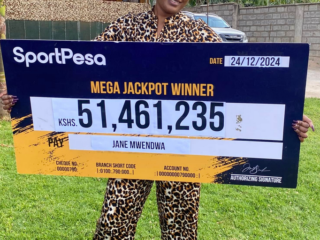Bitcoin Mining is the process of spending computing power to process transactions, secure the network, and keep everyone in the system synchronized together. It can be perceived like the Bitcoin data center except that it has been designed to be fully decentralized with miners operating in all countries and no individual having control over the network. This process is referred to as “mining” as an analogy to gold mining because it is also a temporary mechanism used to issue new bitcoins. Unlike gold mining, however, Bitcoin mining provides a reward in exchange for useful services required to operate a secure payment network. Mining will still be required after the last bitcoin is issued.
How does Bitcoin mining work?
Anybody can become a Bitcoin miner by running software with specialized hardware. Mining software listens for transactions broadcast through the peer-to-peer network and performs appropriate tasks to process and confirm these transactions. Bitcoin miners perform this work because they can earn transaction fees paid by users for faster transaction processing, and newly created bitcoins issued into existence according to a fixed formula.
For new transactions to be confirmed, they need to be included in a block along with a mathematical proof of work. Such proofs are very hard to generate because there is no way to create them other than by trying billions of calculations per second. This requires miners to perform these calculations before their blocks are accepted by the network and before they are rewarded. As more people start to mine, the difficulty of finding valid blocks is automatically increased by the network to ensure that the average time to find a block remains equal to 10 minutes. As a result, mining is a very competitive business where no individual miner can control what is included in the block chain.
The proof of work is also designed to depend on the previous block to force a chronological order in the block chain. This makes it exponentially difficult to reverse previous transactions because this requires the recalculation of the proofs of work of all the subsequent blocks. When two blocks are found at the same time, miners work on the first block they receive and switch to the longest chain of blocks as soon as the next block is found. This allows mining to secure and maintain a global consensus based on processing power.
Bitcoin miners are neither able to cheat by increasing their own reward nor process fraudulent transactions that could corrupt the Bitcoin network because all Bitcoin nodes would reject any block that contains invalid data as per the rules of the Bitcoin protocol. Consequently, the network remains secure even if not all Bitcoin miners can be trusted.
Isn’t Bitcoin mining a waste of energy?
Spending energy to secure and operate a payment system is hardly a waste. Like any other payment service, the use of Bitcoin entails processing costs. Services necessary for the operation of currently widespread monetary systems, such as banks, credit cards, and armored vehicles, also use a lot of energy. Although unlike Bitcoin, their total energy consumption is not transparent and cannot be as easily measured.
Bitcoin mining has been designed to become more optimized over time with specialized hardware consuming less energy, and the operating costs of mining should continue to be proportional to demand. When Bitcoin mining becomes too competitive and less profitable, some miners choose to stop their activities. Furthermore, all energy expended mining is eventually transformed into heat, and the most profitable miners will be those who have put this heat to good use. An optimally efficient mining network is one that isn’t actually consuming any extra energy. While this is an ideal, the economics of mining are such that miners individually strive toward it.
How does mining help secure Bitcoin?
Mining creates the equivalent of a competitive lottery that makes it very difficult for anyone to consecutively add new blocks of transactions into the block chain. This protects the neutrality of the network by preventing any individual from gaining the power to block certain transactions. This also prevents any individual from replacing parts of the block chain to roll back their own spends, which could be used to defraud other users. Mining makes it exponentially more difficult to reverse a past transaction by requiring the rewriting of all blocks following this transaction.
Bitcoin Mining Hardware Comparison
Currently, based on (1) price per hash and (2) electrical efficiency the best Bitcoin miner options are:
AntMiner S7
- 4.73 Th/s
- 0.25 W/Gh
- 8.8 pounds
- Yes
- $479.95
- 0.1645
AntMiner S
- 13.5 Th/s
- 0.098 W/Gh
- 8.1 pounds
- Yes
- $1,987.95
- 0.3603
Avalon6
- 3.5 Th/s
- 0.29 W/Gh
- 9.5 pounds
- No
- $499.95
- 0.1232
Bitcoin mining is intentionally designed to be resource-intensive and difficult so that the number of blocks found each day by miners remains steady. Individual blocks must contain a proof of work to be considered valid. This proof of work is verified by other Bitcoin nodes each time they receive a block. Bitcoin uses the hashcash proof-of-work function.
The primary purpose of mining is to allow Bitcoin nodes to reach a secure, tamper-resistant consensus. Mining is also the mechanism used to introduce Bitcoins into the system: Miners are paid any transaction fees as well as a “subsidy” of newly created coins.
This both serves the purpose of disseminating new coins in a decentralized manner as well as motivating people to provide security for the system.
Bitcoin mining is so called because it resembles the mining of other commodities: it requires exertion and it slowly makes new currency available at a rate that resembles the rate at which commodities like gold are mined from the ground.
What is Proof of Work?
A proof of work is a piece of data which was difficult (costly, time-consuming) to produce so as to satisfy certain requirements. It must be trivial to check whether data satisfies said requirements.
Producing a proof of work can be a random process with low probability, so that a lot of trial and error is required on average before a valid proof of work is generated. Bitcoin uses the Hashcash proof of work.
What is Bitcoin Mining Difficulty?
The Computationally-Difficult Problem
Bitcoin mining a block is difficult because the SHA-256 hash of a block’s header must be lower than or equal to the target in order for the block to be accepted by the network.
This problem can be simplified for explanation purposes: The hash of a block must start with a certain number of zeros. The probability of calculating a hash that starts with many zeros is very low, therefore many attempts must be made. In order to generate a new hash each round, a nonce is incremented. See Proof of work for more information.
The Bitcoin Network Difficulty Metric
The Bitcoin mining network difficulty is the measure of how difficult it is to find a new block compared to the easiest it can ever be. It is recalculated every 2016 blocks to a value such that the previous 2016 blocks would have been generated in exactly two weeks had everyone been mining at this difficulty. This will yield, on average, one block every ten minutes.
As more miners join, the rate of block creation will go up. As the rate of block generation goes up, the difficulty rises to compensate which will push the rate of block creation back down. Any blocks released by malicious miners that do not meet the required difficulty target will simply be rejected by everyone on the network and thus will be worthless.
The Block Reward
When a block is discovered, the discoverer may award themselves a certain number of bitcoins, which is agreed-upon by everyone in the network. Currently this bounty is 25 bitcoins; this value will halve every 210,000 blocks. See Controlled Currency Supply.
Additionally, the miner is awarded the fees paid by users sending transactions. The fee is an incentive for the miner to include the transaction in their block. In the future, as the number of new bitcoins miners are allowed to create in each block dwindles, the fees will make up a much more important percentage of mining income.















